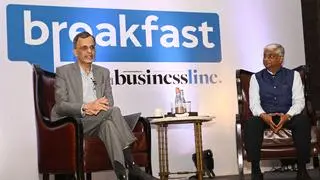Once the largest sponge iron producers in the world, Indian manufacturers today face pressure and are struggling for survival.
“The industry has been cornered by quite a few issues, including restricted availability of vital raw materials such as iron ore, non-coking coal and natural gas at affordable prices, poor quality of raw materials, threat from import of steel melting scrap and, of course, poor market conditions,” said Dilip Oommen, CEO and MD, Essar Steel India.
In 2012-13, production of sponge iron fell to less than 19 million tonnes (mt), a decrease of 26 per cent in two years. India contributes about 30 per cent of global sponge iron production.
Analysts estimate that about 20 per cent of steel is manufactured in India by using sponge iron as raw material. The bulk of the sponge iron produced is used in the production of secondary steel. There are more than 1,200 induction furnaces that use sponge iron to make steel.
“Constraints in supply and higher prices of raw materials hurt India’s small sponge iron units. These cascaded to supply-side constraints, impacting overall steel output in the short term,” said Wilfried Aulbur, Managing Partner, Roland Berger Strategy Consultants.
The rise in power and fuel expenses and transportation costs further pushed up the manufacturing cost of sponge iron.
Resource crunch
In particular, non-availability of iron ore and coking coal has hit domestic sponge iron manufacturers hard. Karnataka and Odisha, which account for about 37 per cent of the total installed capacity of sponge iron in India, have been affected by iron ore mining restrictions. As a result, sponge iron production in these States has declined considerably.
Sponge iron players have also been hit by higher prices and inferior ore quality. “Today, only those companies that have a back-up of iron ore can run independent sponge iron plants. At the moment, capacity utilisation is roughly 50 per cent,” said V. R. Sharma, Chairman, Sponge Iron Manufacturers Association (SIMA).
The sponge iron industry has the potential to contribute 5-7 per cent to GDP, said Sharma, who is also Deputy MD and CEO (steel business), Jindal Steel and Power Ltd.
Another major threat to the industry is import of steel melting scrap. In 2012-13, India imported about 8.5 mt of scrap, an increase of 136 per cent from 2010-11.
Moreover, import of direct reduced iron (DRI), a raw material for steel making, is also rising. From almost zero in 2010-11, DRI imports touched 7.56 lakh tonnes in 2012-13.
Need for reforms
The industry wants the Government to push for reforms that ensure availability of iron ore to sponge iron companies to maximise production.
“An opportunity exists to explore and set up rotary hearth and vertical shaft furnaces for production of sponge iron. Adopting these types of furnaces would lead to effective exploitation of lower quality grades, overcoming the current technological barriers,” said Aulbur of Roland Berger.
In addition, coal gasification-based sponge iron plants could become a game-changer. Successful adoption of technology would be critical for this, besides regulatory incentives and access to capital at reasonable rates.
One important step that could help the sponge iron industry is lowering electricity tariffs. At present, States such as Maharashtra, Uttar Pradesh and Tamil Nadu charge more than Rs 7 a unit, while Odisha and Chhattisgarh charge less than Rs 5 a unit.
Also, beneficiation of iron ore should be incentivised, said Oommen of Essar.








Comments
Comments have to be in English, and in full sentences. They cannot be abusive or personal. Please abide by our community guidelines for posting your comments.
We have migrated to a new commenting platform. If you are already a registered user of TheHindu Businessline and logged in, you may continue to engage with our articles. If you do not have an account please register and login to post comments. Users can access their older comments by logging into their accounts on Vuukle.